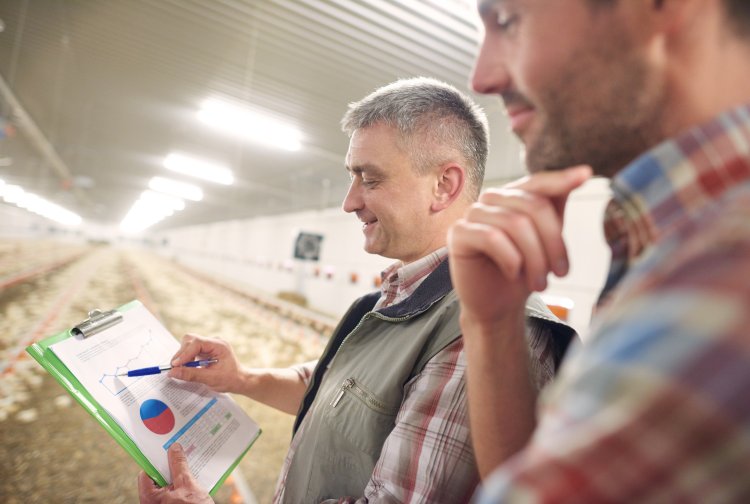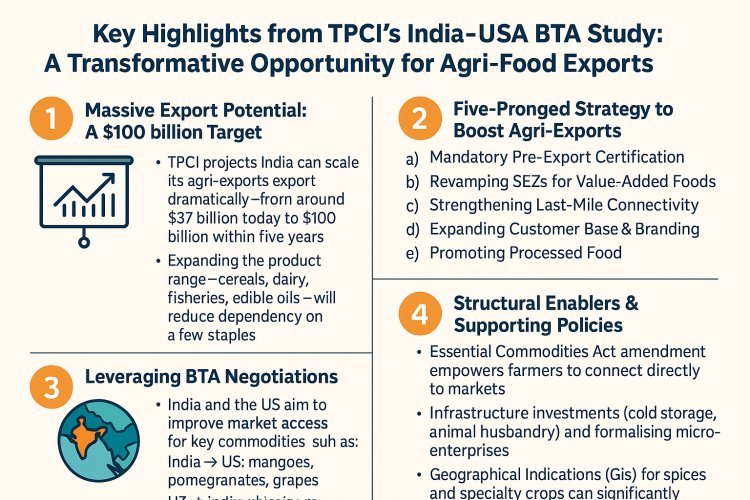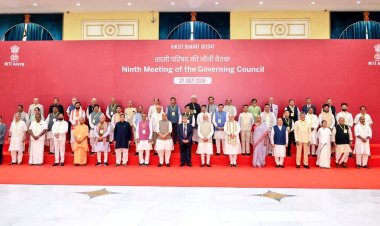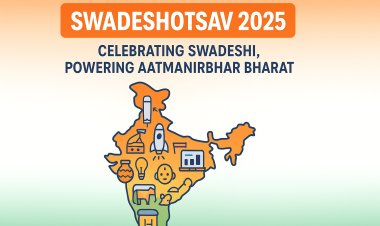Key Highlights from TPCI’s India-USA BTA Study: A Transformative Opportunity for Agri-Food Exports
Explore the key insights from TPCI's India-USA BTA study, highlighting how a transformative Bilateral Trade Agreement can unlock immense opportunities and boost agri-food exports between the two nation

New Delhi, June 2025 – The Trade Promotion Council of India (TPCI) has released a comprehensive research study that could reshape the future of India’s agricultural exports to the United States. The report, titled “India-US BTA: Prospects for Agriculture & Allied Sectors,” provides a data-driven analysis of the potential benefits, challenges, and strategic pathways for agri-food exporters as both nations inch closer to a landmark Bilateral Trade Agreement (BTA)
Why the India–USA BTA Matters
India and the United States are among the world’s largest economies and democracies, with a trade relationship that is both dynamic and increasingly strategic. The report underscores that agriculture remains a critical—and sensitive—sector in bilateral trade, directly affecting food security, rural livelihoods, and national development goals in both countries.
Historically, agricultural trade between India and the US has been marked by divergent policy approaches, regulatory hurdles, and concerns over tariffs, sanitary standards, and genetically modified organisms (GMOs). The proposed BTA aims to address these barriers, fostering a more predictable and mutually beneficial trade environment.
Top Products with Export Potential From India To USA
The TPCI study identifies several Indian agri-food products with significant export potential to the US market. Key highlights include:
-
Seafood: India’s shrimp and other seafood products are highly sought after in the US, but exporters often face challenges with sanitary and phytosanitary (SPS) standards and residue limits.
-
Basmati Rice: India is the world’s largest exporter of basmati rice, and the US offers a lucrative market. However, issues such as differing maximum residue limits (MRLs) have led to occasional rejections.
-
Horticultural Products: Mangoes, grapes, and other fruits have strong demand, but export growth is hampered by divergent treatment requirements (e.g., gamma irradiation for the US vs. hot water treatment for the EU).
-
Processed Fruits and Vegetables: There is growing interest in Indian processed foods, provided exporters can meet US quality and safety standards.
| Product Category | India’s Current US Share | Global Competitiveness | US MFN Tariff | BTA Advantage |
|---|---|---|---|---|
| Semi-milled rice | $332M | 24.9% global export share | 11.2% | Duty elimination → $1B+ opportunity |
| Shrimp & prawns | $446M (28% US market share) | World’s #1 exporter | 0% (but SPS barriers) | Faster approvals, mutual certification |
| Sugar confectionery | $5.5M | 3.03% global share | Up to 40¢/kg | TRQ expansion, duty-free access |
| Dried capsicum | $88.8M | 28.1% US market share | 3¢/kg | Tariff elimination → 50% export boost |
| Quinoa & fonio | Minimal | Rising "superfood" demand | 1.1% | Niche market entry with zero tariffs |
Tariff Gaps and FTA Benefits
The report outlines how current tariffs and non-tariff barriers (NTBs) hinder the full realization of trade potential. Key findings include:
-
High Tariffs: Both countries maintain high tariff protections on certain agricultural goods, limiting market access.
-
Non-Tariff Barriers: Divergent SPS and technical standards, costly authorization procedures, and unpredictable regulatory processes create additional hurdles for exporters.
-
FTA Advantages: The study reviews US free trade agreements (FTAs) with countries like South Korea, Singapore, and Australia, noting that tariff elimination and regulatory harmonization have led to significant export surges in agricultural products. For example, US exports to new FTA partners have grown up to fourfold within five years of agreement implementation.
Data-Backed Market Insights
The TPCI report leverages robust data to provide actionable insights for exporters and policymakers:
-
Regulatory Alignment: The need for transparent, science-based SPS alignment is critical. Past incidents, such as the rejection of Indian rice due to tricyclazole residue or the denial of grape consignments despite compliance, highlight the importance of regulatory predictability.
-
Phased Liberalization: The report recommends a phased BTA approach, focusing initially on limited goods and issues such as tariff reduction and NTBs, while safeguarding sensitive sectors like wheat, rice, and dairy.
-
Investment and Innovation: A well-designed BTA could incentivize investment, promote agri-tech innovation, and create new export opportunities for farmers and agribusinesses on both sides.
-
$6.19B Cereals Gap:
-
India commands 8% global cereal exports but holds just 1.81% share in the US market.
-
Top Opportunities: Milled rice, maize, quinoa, and wheat (US MFN tariffs: up to 11.2%). A BTA could eliminate duties, mirroring US FTAs with Australia/Israel.
-
-
Sugar Sector’s $2.81B Underperformance:
-
Despite being the world’s #2 sugar producer, India’s US market share is 0.22% (vs. 3.03% globally).
-
Tariff-rate quotas (TRQs) and complex duties (up to €33.87/kg) block access. BTA negotiations could secure duty-free quotas for raw cane sugar and confectionery.
-
-
Vegetables & Spices: Untapped $1B+ Niches:
-
Tomatoes, chillies, and garlic face MFN tariffs up to €5.6/kg, despite massive US demand.
-
India’s spices (e.g., dried capsicum) face ¢/kg duties; BTA could align SPS standards and slash costs.
-
-
US Market Access Barriers:
-
Sanitary-Phytosanitary (SPS) hurdles reject 30% of Indian shipments (e.g., rice for tricyclazole residue).
-
Divergent Maximum Residue Limits (MRLs) and irradiation requirements for mangoes raise compliance costs.
-
-
US Export Gaps in India:
-
The US holds 21.1% global oilseed exports but only 1.7% share in India’s imports.
-
Untapped Sectors: Cereals (12.5% global share vs. 0.9% in India), dairy, and meat.
-
India and USA Strategic Pathways Forward
The report concludes with actionable recommendations for a more inclusive and sustainable agricultural trade partnership:
-
Targeted Concessions: India should negotiate duty cuts in select high-value categories (e.g., oilseeds, shrimp, processed fruits) while protecting staples.
-
Mutual Recognition: Both countries should work toward mutual recognition of certifications and reduction of arbitrary trade restrictions.
-
Visa and Market Access: India can leverage the BTA to secure favorable visa norms for IT professionals and greater access for pharmaceuticals and agro-products in the USA.

How a BTA Could Transform India and USA Trade
-
Tariff Elimination: 14 US FTAs (e.g., with Australia/Singapore) grant partners zero tariffs on agri-goods. India faces up to 26.4% duties on meats and 33.87€/kg on sugar.
-
NTB Solutions:
-
Mutual recognition of organic certifications.
-
Single-window SPS clearance and aligned MRLs with Codex.
-
SME support for compliance costs (e.g., aflatoxin testing).
-
-
$500B Bilateral Trade Target: Agri-exports could anchor India’s goal to double US trade by 2030.
TPCI’s Recommendations
-
Prioritize Tariff Cuts: Focus on cereals, sugar, and horticulture where MFN gaps are highest.
-
Adopt Phased Liberalization: Protect staples (wheat, dairy) while opening high-value segments (seafood, basmati).
-
Demand SPS Harmonization: Replace US-specific gamma irradiation for mangoes with globally accepted protocols.
-
Leverage Diaspora Demand: Market spices, tea, and ethnic processed foods to 4.4M Indian-Americans.
About TPCI: The Trade Promotion Council of India is a statutory body under India’s Ministry of Commerce. This report was authored by Virat Bahri (Joint Director) and research teams at TPCI’s Centre for Advanced Trade Research.
Conclusion
The TPCI’s study is a must-read for anyone involved in agri-food exports between India and the US. It offers a clear roadmap for leveraging the India–US BTA to unlock new market opportunities, overcome regulatory hurdles, and achieve sustainable growth in the agriculture sector. With careful negotiation and strategic engagement, the BTA could transform agricultural trade into a channel of mutual benefit rather than friction, positioning Indian agro-exports more competitively in global value chains.

 Editor
Editor 






























